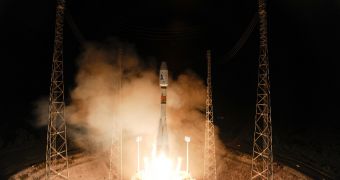France-based company Arianespace needs at least two decades to recuperate its initial investment in bringing Russian-built Soyuz rockets and associated launch facilities to the European Space Agency's (ESA) Kourou Spaceport, a new report announced recently.
Phasing out the Soyuz medium-lift delivery system from the South American spaceport within the next decade, and replacing it with the proposed Ariane VI rocket, could deal a crippling financial blow to the company, which has taken on a large loan in order to bring Russian hardware to Kourou.
Overall, Arianespace has invested €171 million ($233 million) in building a Soyuz launch pad and associated installations at the ESA spaceport. Around €121 million ($165 million) of this sum is accounted for by a loan from the European Investment Bank. The loan is guaranteed by France.
The new analysis was put together by the French Accounting Court, a government-spending watchdog in France, and released on Tuesday, February 11. The document states that replacing Soyuz rockets with Ariane VI deliver systems within 10 years would mean a 10-year reduction in the amortization period of Arianespace's initial investment.
This blow could be significant enough to make the company go bankrupt, causing losses for the French government as well. Arianespace needs to operate the Soyuz from Kourou until at least 2031, depending on space market conditions. The company also pays €4.6 million ($6.3 million) yearly in fees to operate the Russian rockets from South America.
The Kourou Spaceport, also known as the Guiana Space Center, is located on French territory, and is not supported by financial aid from the EU. France has been trying to have the site classified as European Critical Infrastructure for years, since mostly ESA uses is for launching Galileo satellites, Space News reports.
Every year, France pays 70 percent of the costs associated with running the facility alone. The issue will most likely be raised again this December, when all ESA member states meet up to discuss various issues. Some of these include an upgrade to the Ariane V workhorse rocket, and the development of Ariane VI.

 14 DAY TRIAL //
14 DAY TRIAL //